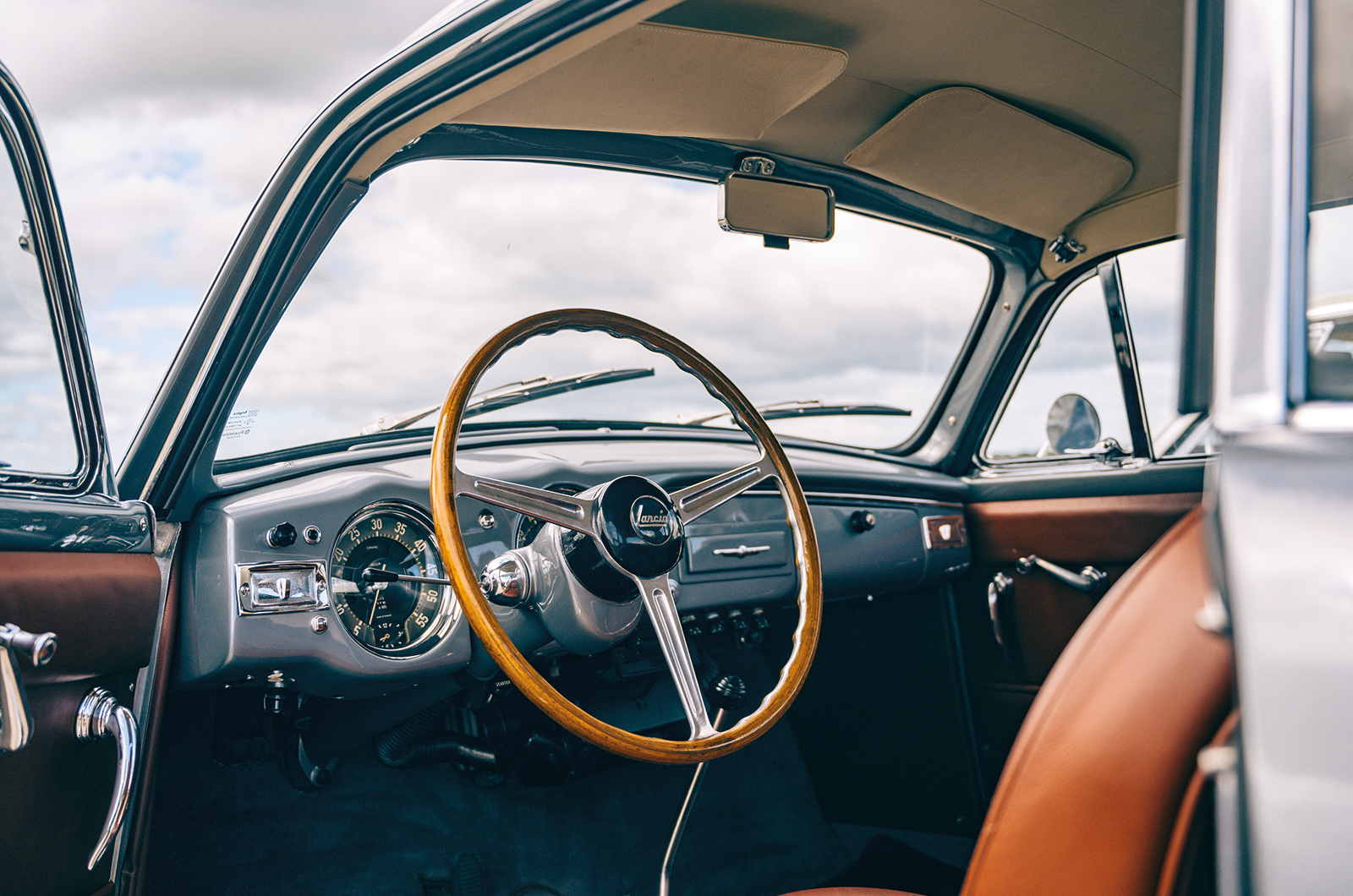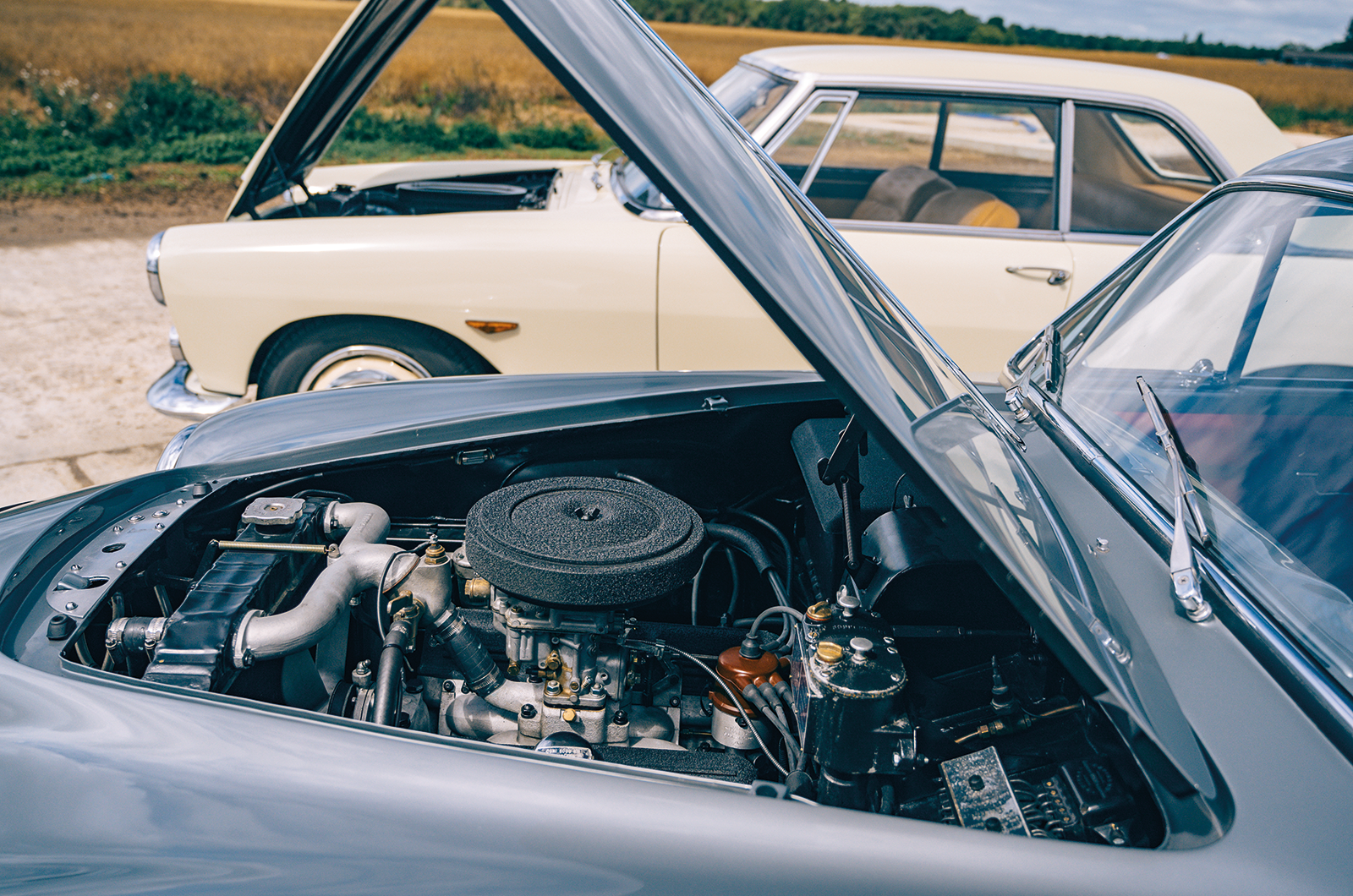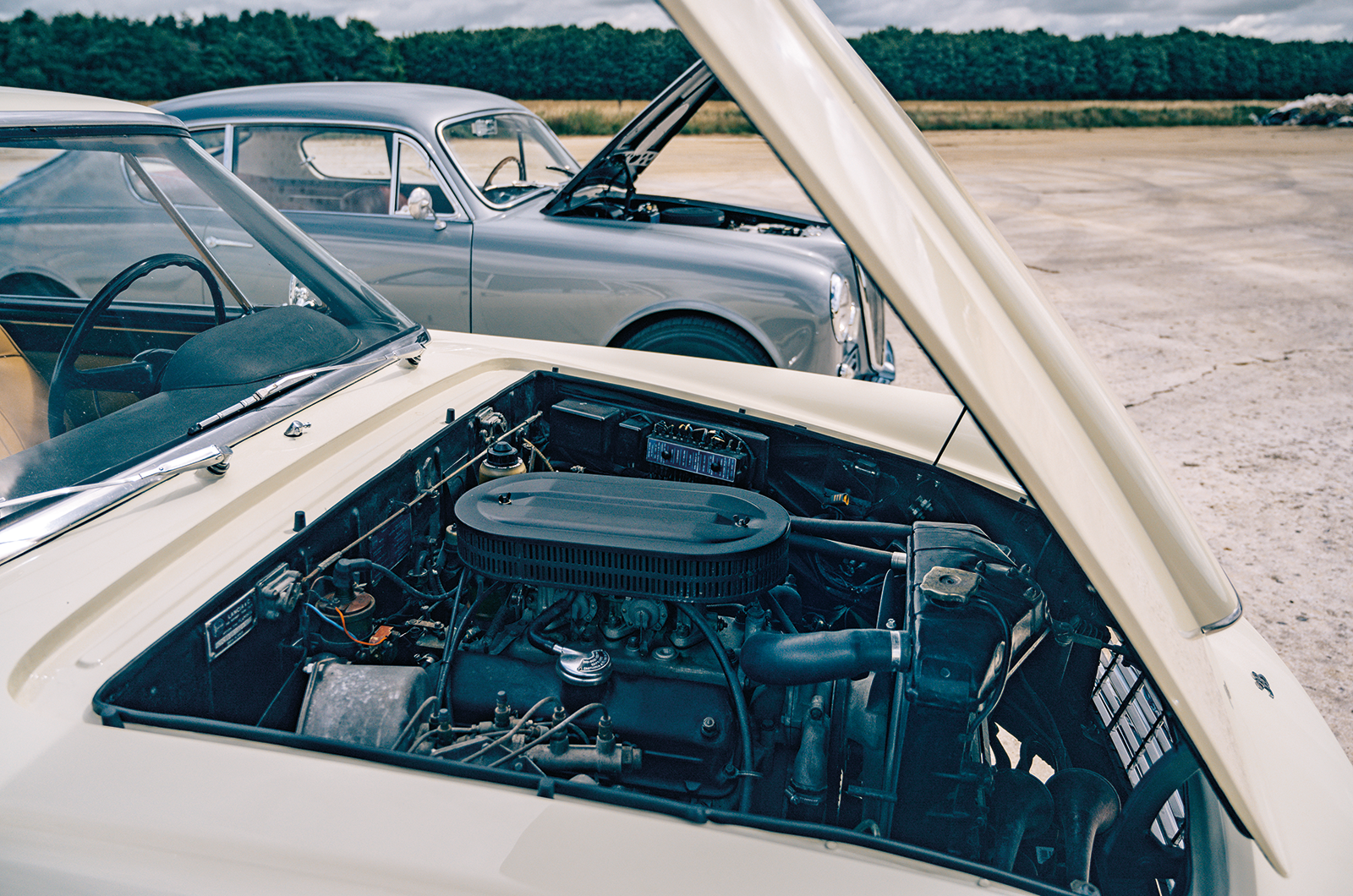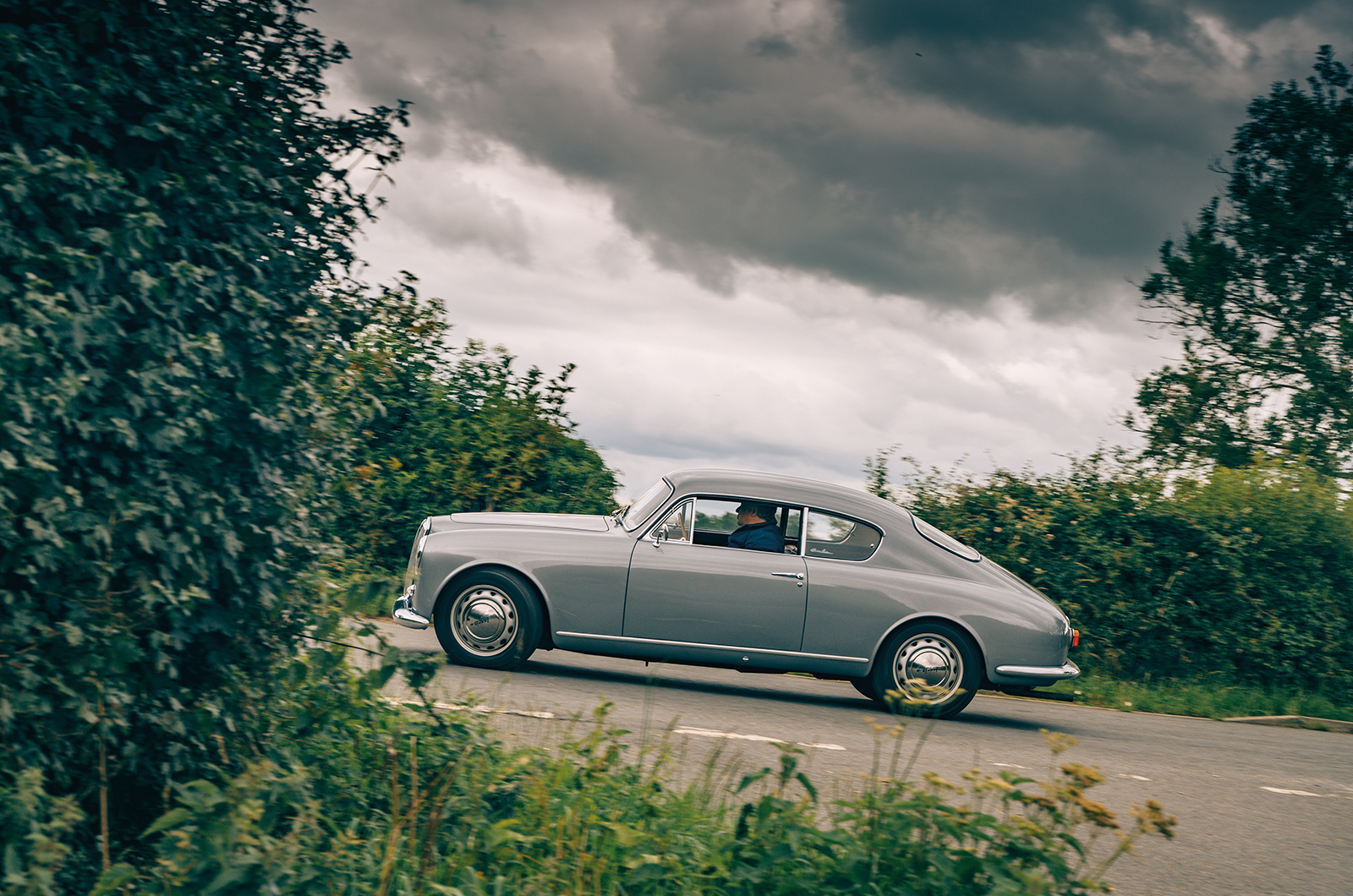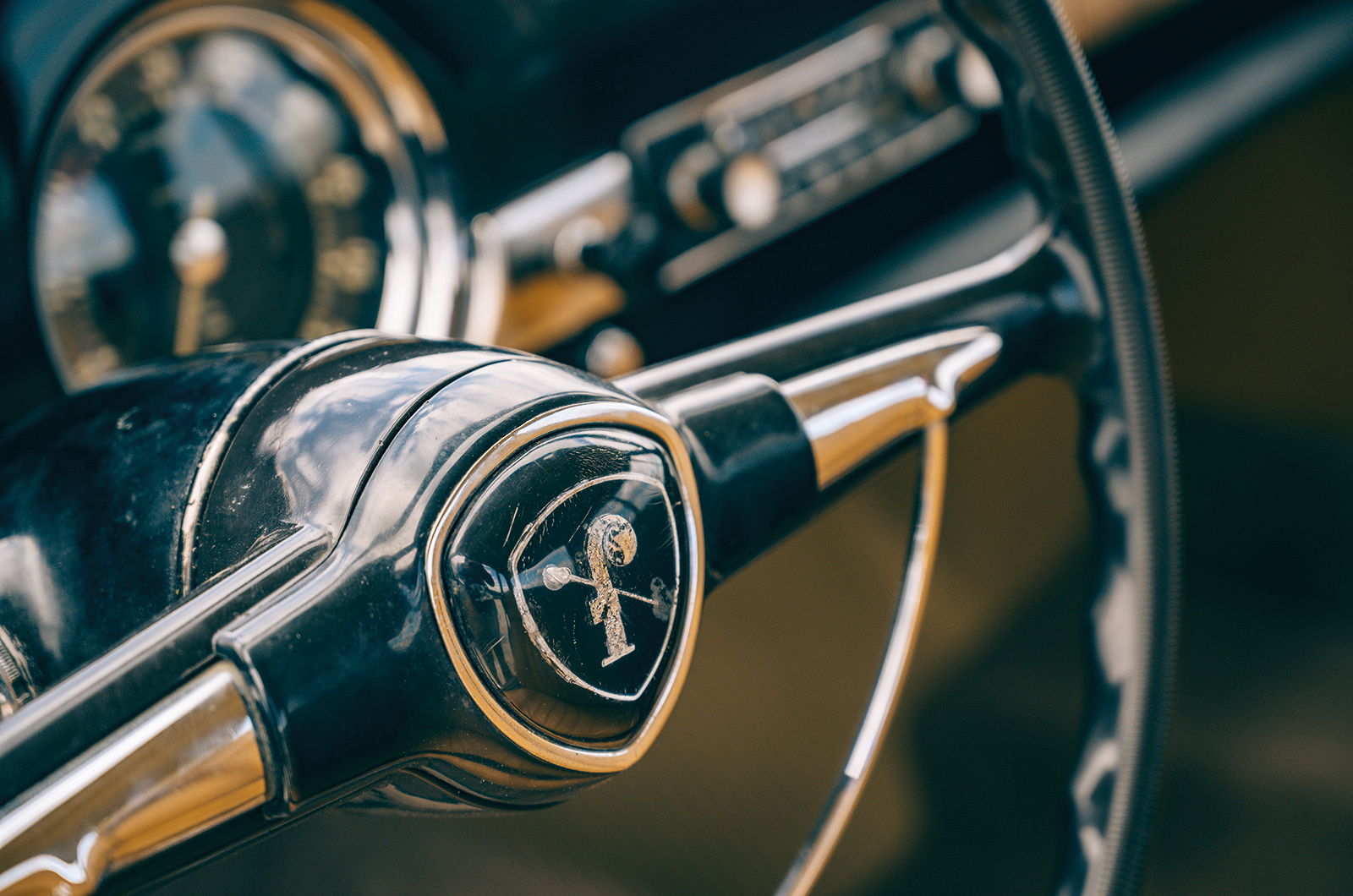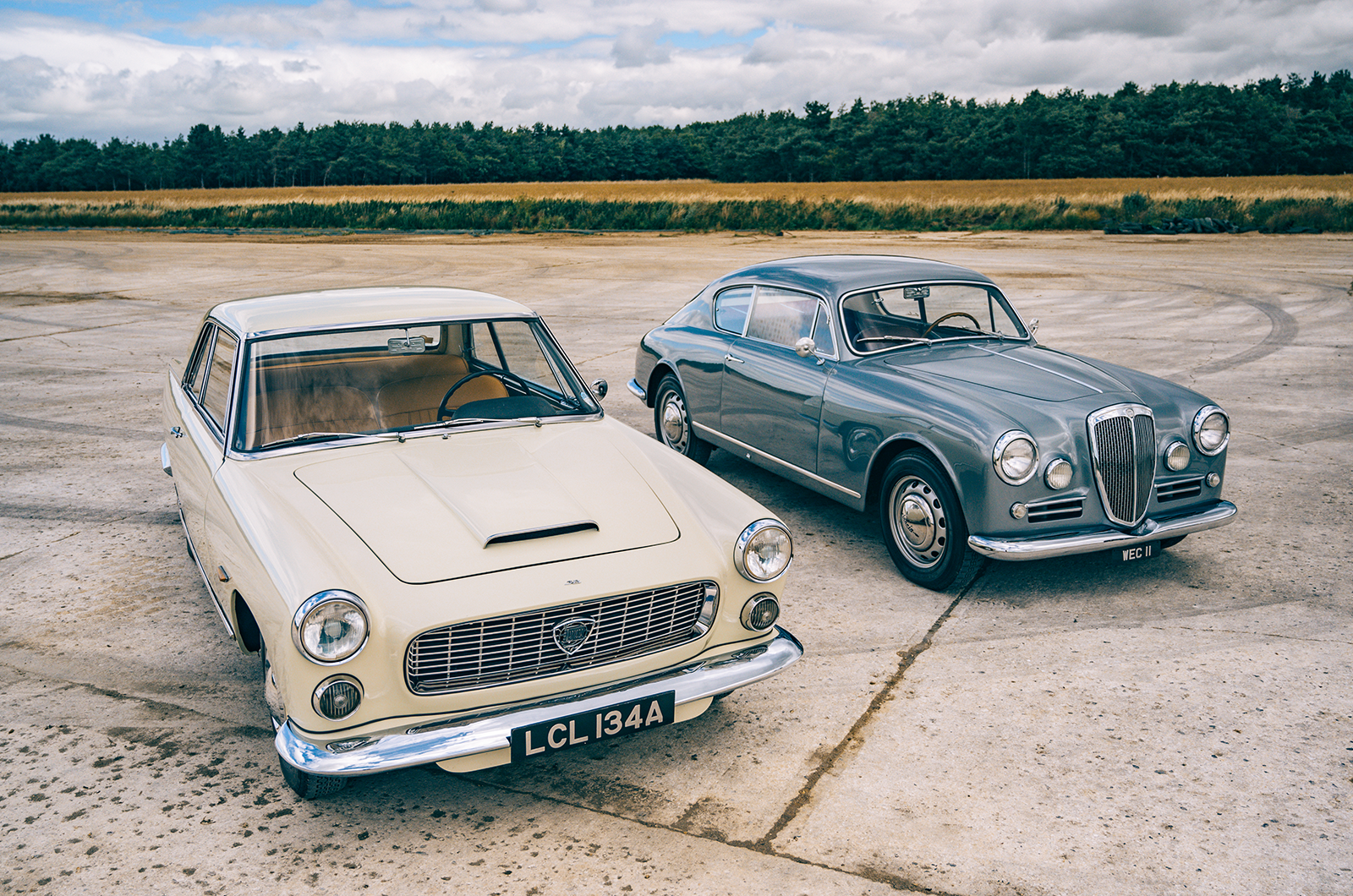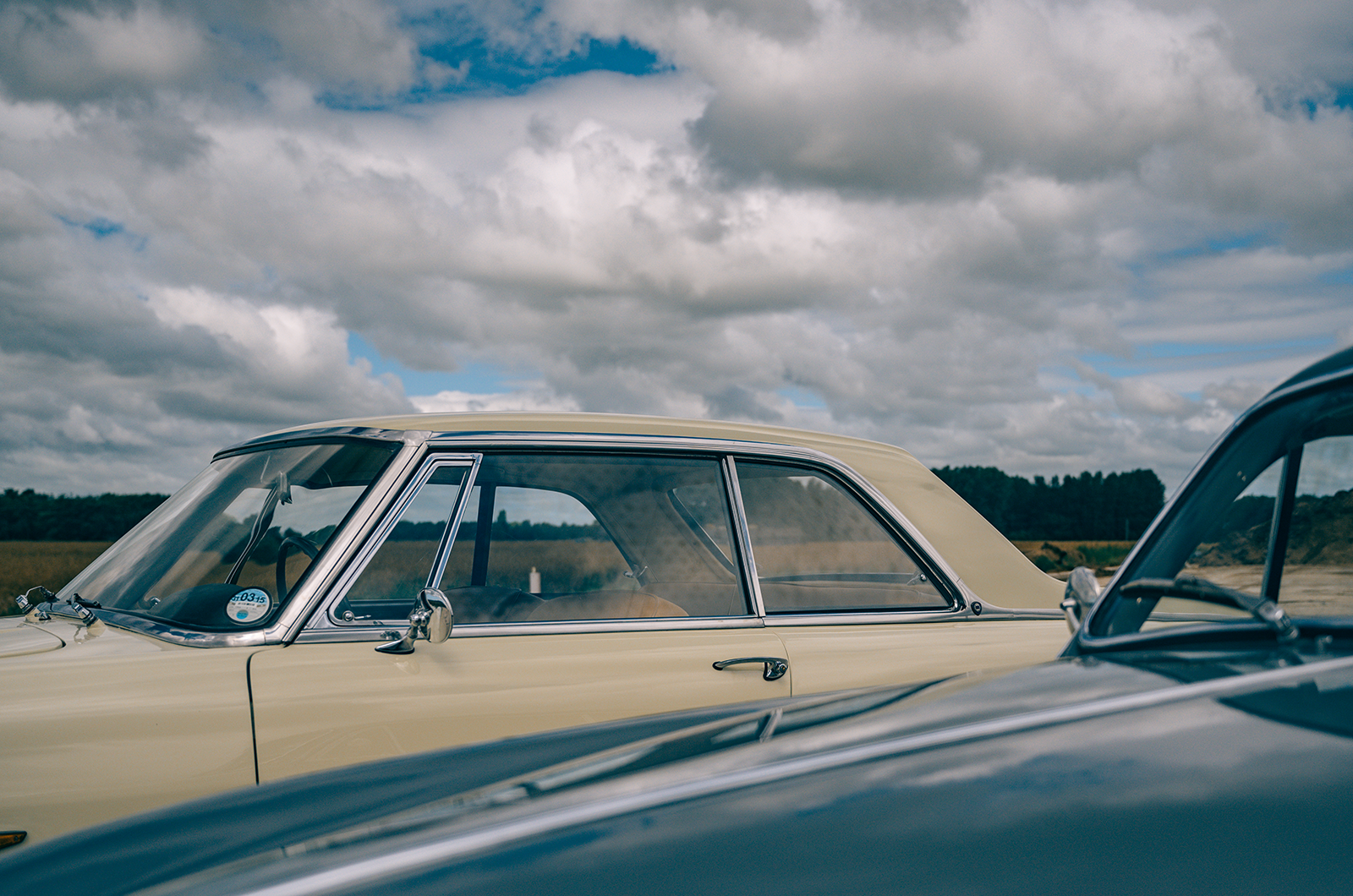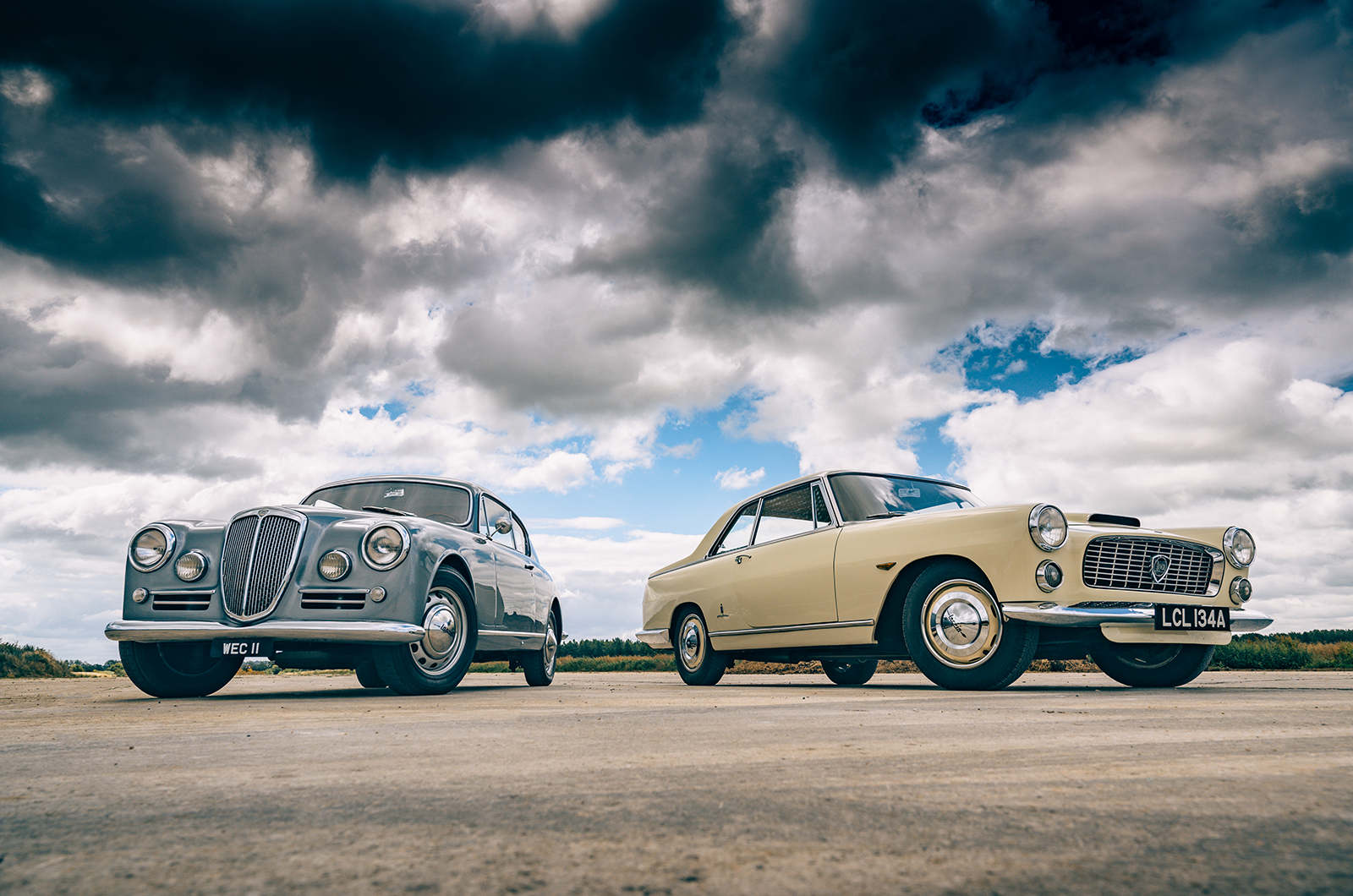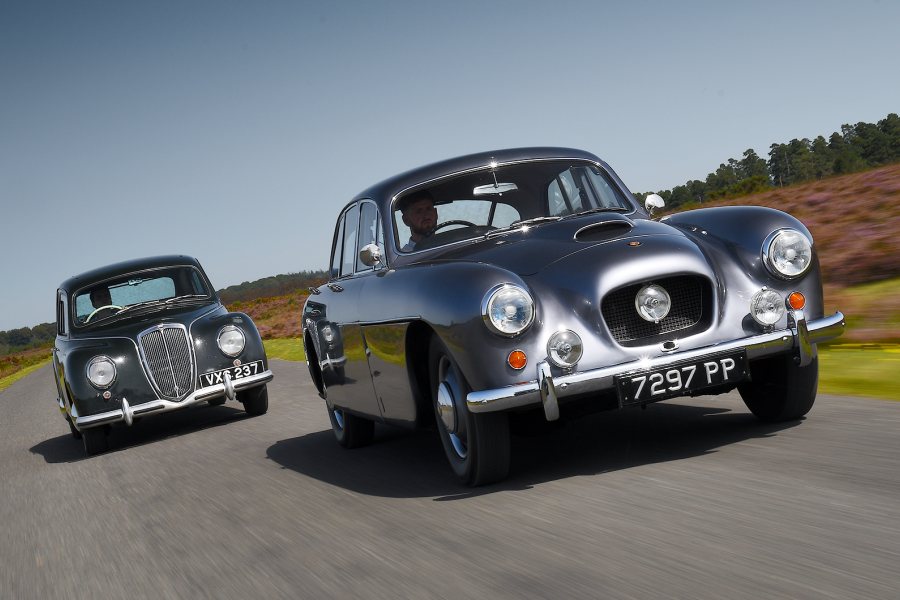The Flaminia Coupé feels as if it goes just as well but seems remote and aloof in comparison; the raw enthusiasm of the earlier car is subtly filtered out.
Pulling the equivalent of two extra passengers in all-up weight, its engine is smoother and more subdued from the inside, has slightly more tappet noise from the outside and should give, roughly, the same in-gear speeds even if it feels fractionally less willing to let the revs wind out in second and third.
Neither car is about top-end power but smooth torque and the sort of even yet responsive delivery that adds to the pleasure of every well-timed gearchange. It also makes them docile and biddable in town.
If not quite so sublime in its action as the Aurelia’s, the Flaminia’s gearchange is still delightfully precise and rather quieter, lacking the shrill whine of the B20’s bottom ratio. If anything it shifts more quickly, with stronger synchros.
There is no wrong choice here
There are no rattles or squeaks in either car, and they ride with a sophisticated assurance that speaks of many unseen and expensive refinements.
The Flaminia’s four-wheel Dunlop discs are superbly powerful and reassuring for a car of 50-odd years old. The big drums of the B20 need a heavier shove but are still good overall.
The handling you almost take for granted, and both cars devour roads that flow with the topography, taking the long, sweeping way through with an aplomb that is dazzling, deploying their modest power effectively where big, faster cars would have to back off.
The skinny tyres give no indication of how fluent and balanced these Lancias are, responsive to every whim and very safe, bereft of pitch and wallow yet with just enough roll to let you know you are cracking on.
The Flaminia’s elegant roofline
The Aurelia’s steering is heavier but quicker; the later car’s is fairly light most of the time, lower geared yet still pleasingly accurate via a large, rather upright plastic wheel.
Where the B20 urges you to commit to corners, the Flaminia generates ample grip at both ends and very little understeer, just asking that you leave a little behind in reserve.
Both of these cars deliver high rewards to those who put in the effort but if, in the end, the Aurelia has more sparkle you can hardly blame Lancia for wanting to build a more refined offering to tempt buyers out of their Mercedes-Benz 300s and Jaguar MkXs.
It didn’t, of course. Seldom has a car been so widely admired yet so rarely bought as the Lancia Flaminia.
Technically more refined than the Aurelia it was also a bigger, heavier vehicle, hampered by a stubborn resistance on Lancia’s part to give it the 3-litre engine it deserved.
“Both of these cars deliver high rewards to those who put in the effort”
So why, after all that, does the Flaminia still attract me so much more than the Aurelia?
I’m not entirely certain. It’s not a money thing: £100,000 separates the insured values of the cars pictured here, but my preference is down to more than just a historical sympathy with a Lancia I can realistically own.
Neither is it a case of a poor boy being dismissive of the rich boy’s toy he will never be able to afford.
Ultimately, I think I just picture myself more readily in a Flaminia Coupé because it is a later car and more ‘my’ era.
Having said that, if it were an Aurelia B24 Spider we were talking about, I might be willing to shift my allegiances. Every man has his price.
Images: Olgun Kordal
Thanks to Thornley Kelham
Factfiles
Lancia Aurelia B20 GT S6
- Sold/no built 1957-’58/424
- Construction steel monocoque
- Engine all-alloy, ohv 2451cc 60º V6, with twin-choke Weber 40DCF5 carburettor
- Max power 118bhp @ 5000rpm
- Max torque 134Ib ft @ 3500rpm
- Transmission four-speed manual transaxle, RWD
- Suspension: front sliding pillars rear de Dion axle, leaf springs, Panhard rod, telescopic dampers
- Steering worm and sector
- Brakes drums
- Length 14ft 4in (4369mm)
- Width 5ft 1in (1549mm)
- Height 4ft 5½in (1359mm)
- Wheelbase 8ft 8in (2642mm)
- Weight 2888lb (1310kg)
- 0-60mph 14 secs
- Top speed 110mph
- Mpg 24
- Price new £3346
- Price now £150,000*
Lancia Flaminia Coupé
- Sold/no built 1963-’67/2153 (2.8 3B)
- Construction steel monocoque
- Engine all-alloy, ohv 2775cc 60º V6, with triple-choke Solex C35 carburettor
- Max power 136bhp @ 5400rpm
- Max torque 163Ib ft @ 3000rpm
- Transmission four-speed manual transaxle, RWD
- Suspension: front unequal-length wishbones, coil springs, anti-roll bar rear de Dion axle, semi-elliptic springs, Panhard rod; telescopic dampers f/r
- Steering worm and sector
- Brakes discs, with servo
- Length 15ft 4in (4674mm)
- Width 5ft 8in (1727mm)
- Height 4ft 8in (1422mm)
- Wheelbase 9ft 2½in (2807mm)
- Weight 3351Ib (1520kg)
- 0-60mph 12.7 secs
- Top speed 111mph
- Mpg 16
- Price new £3388
- Price now £45,000*
*Prices correct at date of original publication
READ MORE
Four by phwoar: Audi quattro vs Lancia Delta Integrale
Luxury coupés: Mercedes 230CE vs Lotus Elite vs Lancia Gamma
19 reasons we love classic estate cars
Martin Buckley
Senior Contributor, Classic & Sports Car





